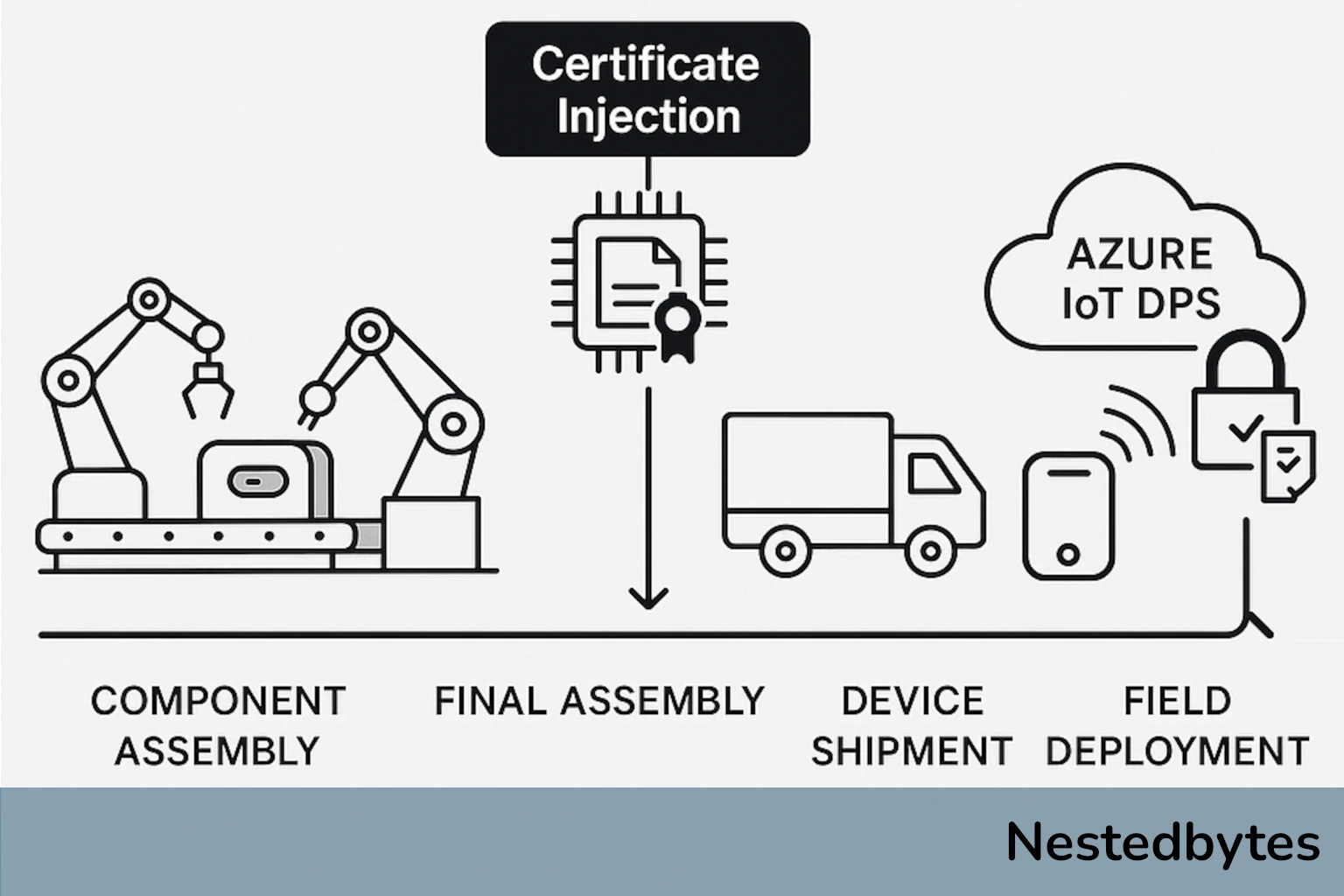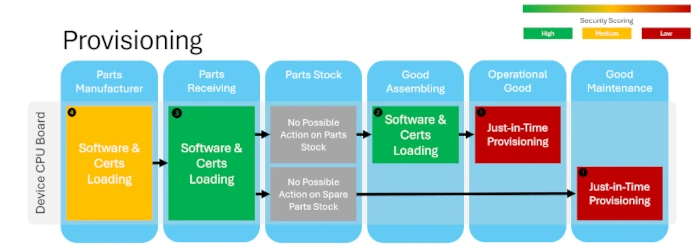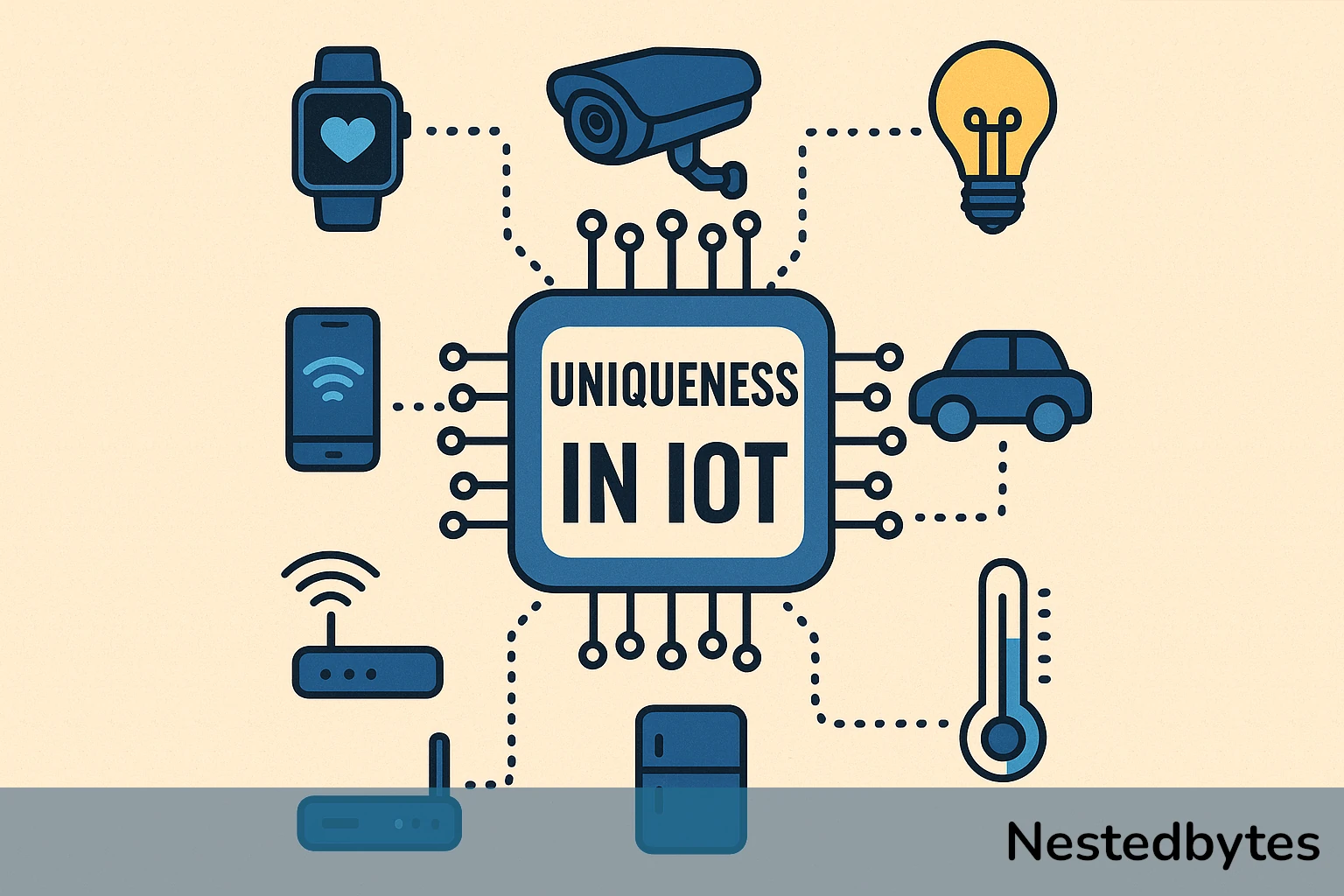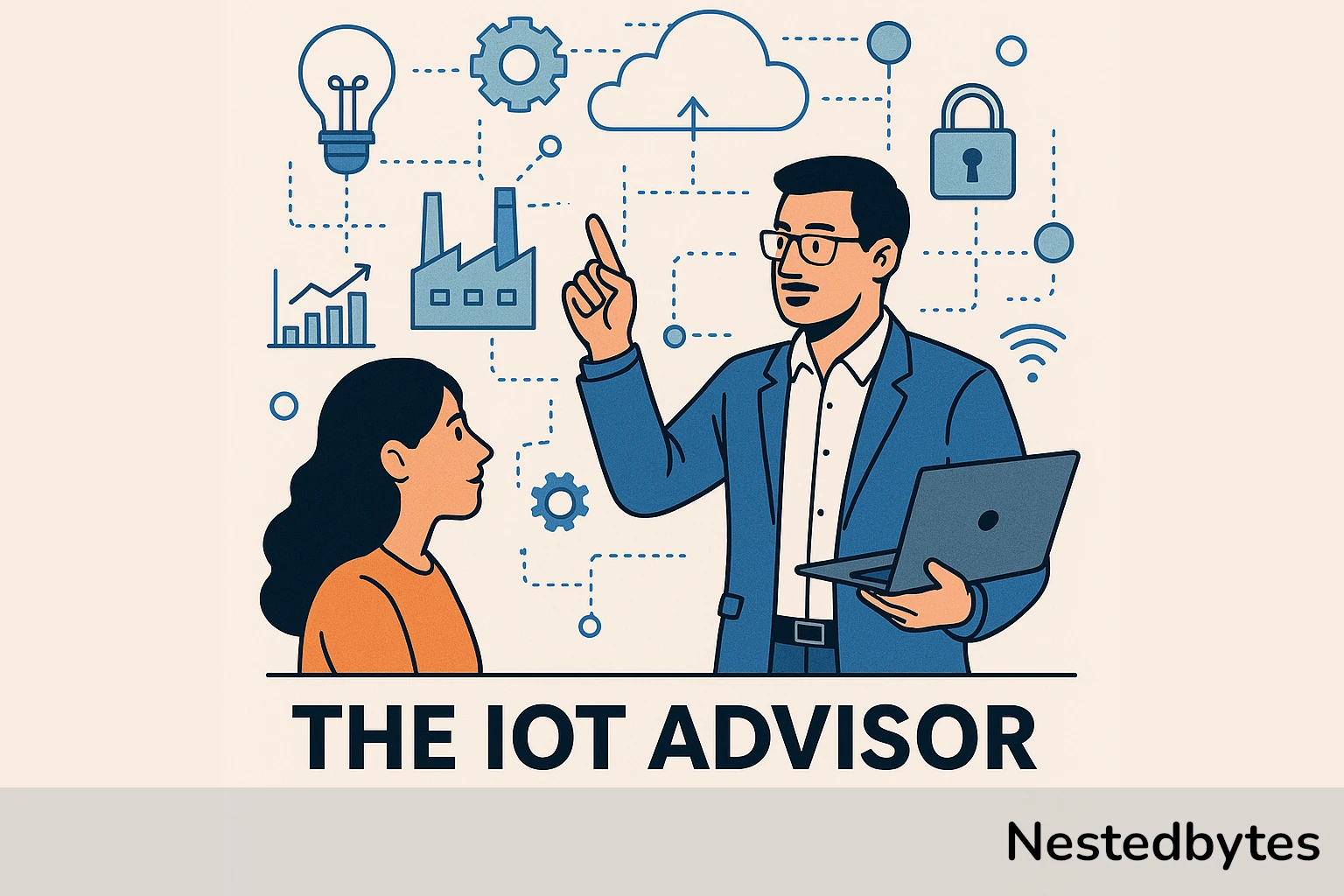
Device Unicity: When Is It Most Relevant to Load the X.509 Certificate for Device Authentication to DPS?
In IoT deployments at scale, device unicity—ensuring each device has a unique, verifiable identity—is a cornerstone of secure and manageable systems. When using Azure IoT Hub Device Provisioning Service (DPS), X.509 certificates are a powerful mechanism to enforce this unicity. But a common question arises: When is the best time to load the X.509 certificate onto the device for authentication with DPS? This article explores the concept, the risks of improper timing, and best practices for secure provisioning.
Understanding the Role of X.509 Certificates in DPS
X.509 certificates are digital credentials used to authenticate devices. In Azure DPS, they serve as an attestation mechanism, proving the device’s identity during provisioning.
There are two main approaches:
- Individual enrollment: Each device is registered with its own certificate thumbprint.
- Group enrollment: A certificate authority (CA) signs device certificates, and the CA’s root or intermediate certificate is registered with DPS.
When Should You Load the X.509 Certificate?

✅ During Manufacturing or Final Assembly
The most secure and scalable time to load the X.509 certificate is during the manufacturing process, ideally at the final assembly or testing stage. This ensures:
- The certificate is securely injected into the device.
- The device is ready for zero-touch provisioning via DPS.
- The identity is tied to the hardware before it leaves the factory.
Certificates should be stored in a Hardware Security Module (HSM) or Secure Element (SE) to prevent tampering.
✅ Before Device Shipment
If manufacturing constraints prevent early injection, certificates can be loaded just before shipment, provided the process is secure and traceable.
❌ After Deployment in the Field
Loading certificates after deployment introduces significant risks:
- Devices may be exposed to tampering.
- Secure channels for certificate injection may not be available.
- It breaks the zero-touch provisioning model.
What Happens If You Don’t Load the Certificate at the Right Time?
- Security Vulnerabilities : Late or insecure certificate injection can lead to identity spoofing or unauthorized access.
- Provisioning Failures : Without a valid certificate, the device cannot authenticate with DPS and will fail to provision.
- Operational Overhead : Manual provisioning or field updates increase cost and complexity.
Why Early Certificate Injection Matters
- Enables Zero-Touch Provisioning : Devices can automatically connect to DPS and be assigned to the correct IoT Hub without manual intervention.
- Supports Device Unicity : Each device has a unique, cryptographically verifiable identity from the start.
- Improves Supply Chain Security : Embedding certificates early ensures traceability and reduces the risk of counterfeit devices.
Best Practices
- Use CA-Signed Certificates: Simplifies enrollment and scales better than individual thumbprints.
- Secure Storage: Store certificates in HSMs/TPMs or secure elements.
- Automate Enrollment: Use DPS group enrollment with verified CAs.
- Audit and Monitor: Track certificate usage and expiration.
Conclusion
Loading the X.509 certificate during manufacturing or final assembly is the most secure and efficient approach to enforce device unicity in Azure IoT Hub via DPS. It enables zero-touch provisioning, enhances security, and simplifies operations at scale.
For any organization building secure IoT solutions, early and secure certificate injection is not just a best practice—it’s a necessity.




